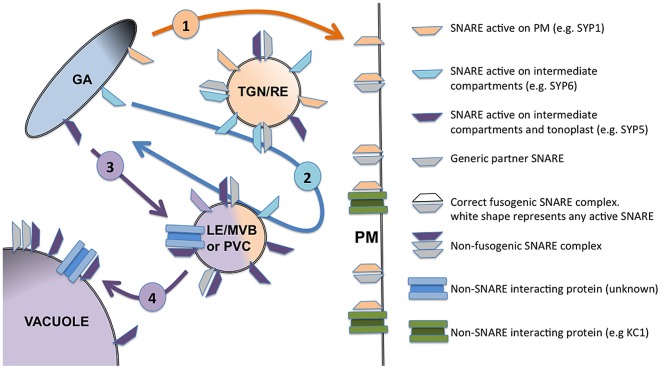Figure 1.
Schematic representation of four distinct situations described for SNARE functioning in the post-Golgi membrane traffic. SNAREs active on the PM, such as for example SYP121 and other members of the SYP1 family, are sorted to the target membrane with an inactive conformation where they act as t-SNAREs. They can interact and eventually regulate non-SNARE partners (as shown for SYP121 and KC1 channel) but do not show interfering activity (1). SNAREs can also be specifically localized and active as t-SNARE on intermediate compartments, such as for example SYP61, localized on the TGN membranes (2). Some SNAREs can be distributed on several membranes and change their action mechanism, as it was shown in the case of SYP5s: they can be active as t-SNARE on the TGN and/or PVC (3), or as i-SNARE when accumulated on the tonoplast (4). The compartments indicated in the figure are generic; their identity may change in different experimental systems and in differentiated cells. The figure summarize five membranes belonging to: the Golgi apparatus cisternae (GA), the early endosomes often identified with trans Golgi networks or recycling endosomes (TGN/RE), the late endosome in the form of multivesicular bodies or pre-vacuolar compartment (LE/MVB or PVC), and finally the tonoplast of the vacuole.

